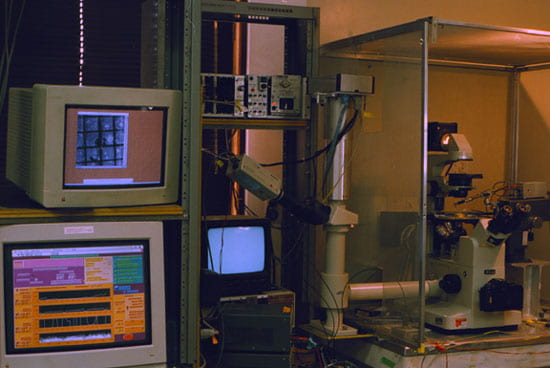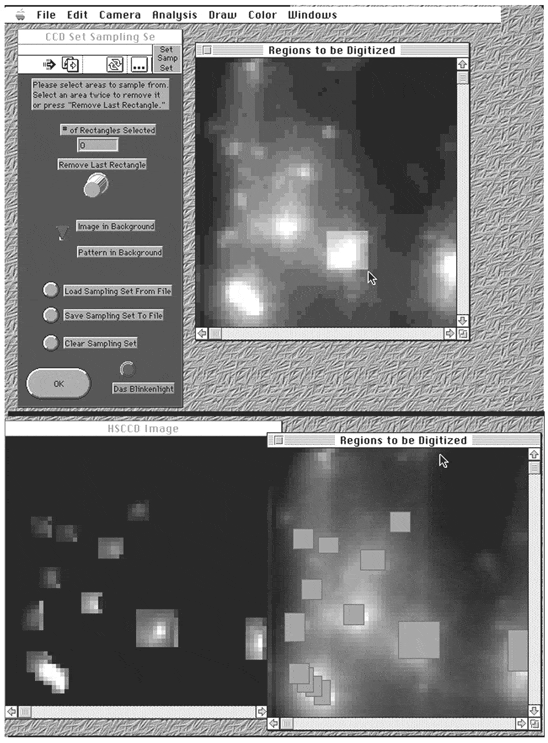In tandem with the electrical data from a multi-electrode array (MEA), populations of neurons can also be observed optically. Using voltage-sensitive dyes (VSDs) and calcium indicators, the electrical and chemical state of an individual neuron or groups of neurons can be precisely monitored, providing insight into a small network’s behavior. Furthermore, with the help of a high-speed CCD camera, this behavior can be monitored with incredibly fine temporal resolution, of up to 5 kHz!
A multi-electrode array, plated with tens of thousands of neurons, records electrical signals from dozens of locations within the neural network. At the same time, the neurons, specially prepared with either voltage-sensitive dyes (VSDs) or calcium indicators, fluoresce (emit light) in proportion to their membrane voltage or calcium concentration, both of which are influenced by the neural network’s activity. This fluorescence is captured by a high-speed camera and recorded for later analysis. Additionally, the neural network can be influenced from the outside by stimulating one of the MEA’s electrodes. The effects of this stimulation, in whatever form it takes (e.g., output from a virtual environment, natural or random signals, or even the activity of another MEA) can then be monitored by both the MEA itself and the high-speed camera.
Our own High-speed CCD camera
Steve M. Potter, Andrew Mart, and Jerry Pine
In the Pine Lab at Caltech we designed and built a high-speed camera for imaging neural systems stained with voltage-sensitive dyes. Our camera uses a 64×64 pixel CCD chip (charge-coupled device) (Tektronix TK064), allowing better resolution than the commonly used 12×12 photodiode arrays. In order to achieve maximum throughput, we digitize only pixels of interest, selected via a LabView computer interface.


The data are collected at 1,000,000 pixels/sec using a 12-bit A/D converter (National Instruments A2000). This allows frame rates of over 1000 frames/sec if 200 or fewer pixels are selected. The camera controller allows groups of adjacent pixels to be binned on the CCD chip, to improve the signal without adding any electronic noise (with concomitant reduction of resolution).
We use this camera to image the dynamics of various neural networks, including dissociated hippocampal cultures, hippocampal slices, and insect brains.

References
- Potter, S. M., Mart, A. N. and Pine, J. (1997); High-speed CCD movie camera with random pixel selection, for neurobiology research. SPIE Proceedings 2869: 243-253.
- The US Patent, 6,633,331 for this camera.

